
Garden and Villa Medici in Castello (Giardino della Villa Medicea di Castello), also known simply as the Villa Castello (Villa di Castello) is a beautiful and famous villa with a historic garden of the Medici family, located in the hilly area of Castello, in the northwest outskirts of Florence.
The name of the villa and the area in which it is located, "Castello", comes from the cistern "castellum" (large reservoir), part of the ancient Roman aqueduct, which was built under the Roman emperor Claudius and where the waters of the Marina creek were stored before entering the city.
The villa is also known as Villa Reale, L'Olmo or Il Vivaio (Villa Reale, L'Olmo, Il Vivaio).
The villa in Castello, together with the villa and the Medici Petraia Garden (Giardino della Villa Medicea La Petraia), are among the most famous villas in the vicinity of Florence.
Villa Castello was one of the oldest country residences of the Medici and a favorite of Cosimo I de' Medici, and the garden adjacent to the villa with fountains, grotto and sculptures is one of the oldest and most magnificent examples of an Italian garden, second only to the Boboli gardens in Florence.
Today, the villa can only be visited on open days and by reservation on special occasions, because it is the residence of the Accademia della Crusca, while the garden of the villa can be visited by anyone, since they belong to the management of the Museums of Tuscany.
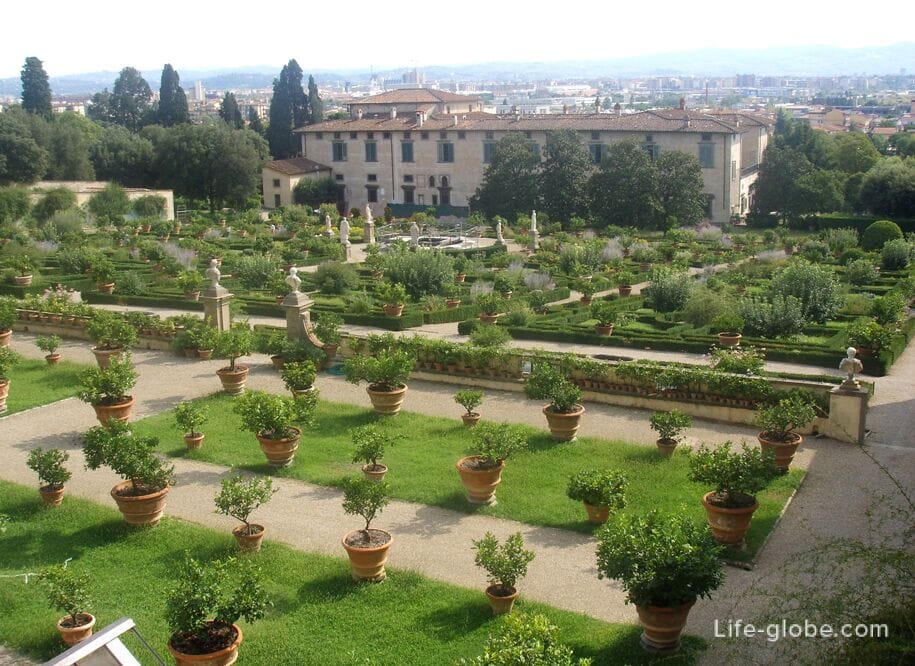
The villa on this site existed already in the 14th century. It was bought around 1477 by Lorenzo di Pierfrancesco and Giovanni di Pierfrancesco de' Medici, who expanded and enriched the villa with works of art. Among them, Sandro Botticelli executed large paintings "Spring" and "The Birth of Venus" to decorate this villa, which today are the pride of the Uffizi of Florence.
The villa was looted and partially burned during the siege of Florence in 1529-1530, as well as almost all other buildings outside the city walls. Since 1538, Cosimo I de' Medici commissioned Giorgio Vasari to renovate the villa, and Niccolo Tribolo to design a garden that would be a magnificent place and a sign of the greatness and power of the Medici dynasty. After Tribolo's death in 1550, the work was continued by Davide Fortini (his son-in-law), and then by Giorgio Vasari.
When the villa passed into the hands of Ferdinando I de' Medici, son of Cosimo, it was finally completed between 1588 and 1595.
After the construction, the gardens of the villa were considered one of the "richest gardens in Europe", also this sal became one of the first great examples of the Italian garden, and the influence it had on the art of subsequent gardening was enormous.
After the extinction of the Medici dynasty, the villa, like other possessions of the family, passed to the Lorraine branch, which made some changes to the villa and garden: the construction of two lemon houses for the citrus collection and the construction of an English park. In the Napoleonic era, numerous transformations were made, including neoclassical decorations created inside the villa.
In 1919, Vittorio Emanuele III transferred the property to the Italian state. In the seventies, a substantial architectural restoration of the villa was carried out, and it was transferred to the Accademia della Cruca.
The villa's garden, already open to the public at that time, was established as a national museum in 1984 and restored.
Today, Villa Castello has an architectural structure consisting of a rectangular front and rear buildings with simple facades connected to each other on each side by a quadrangular building; in general, four buildings leaning against each other form a rectangular courtyard with two loggias.
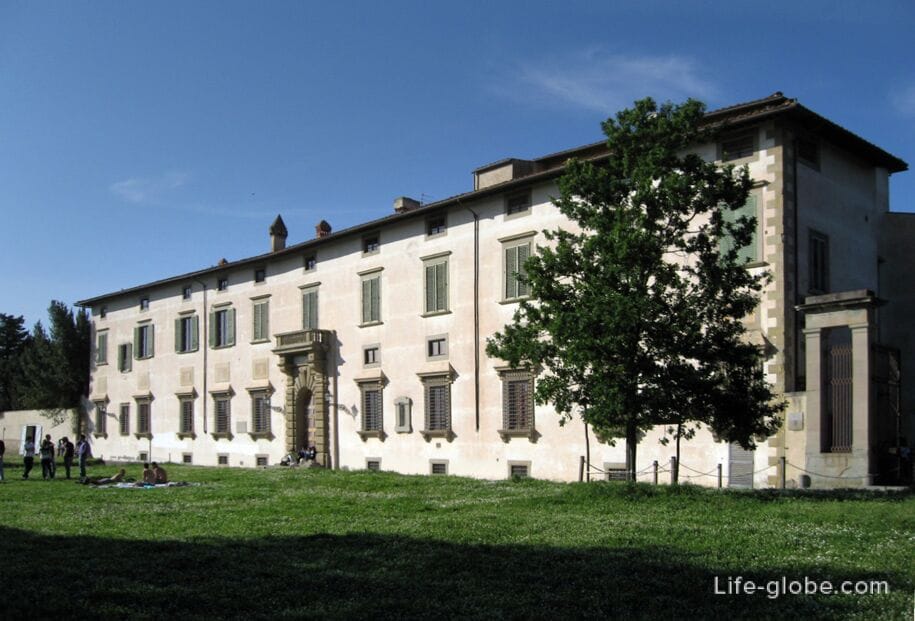
Interior yard

From the original decoration of the villa of the sixteenth century, the fresco "Annunciation" remains in place, placed in the lunette at the beginning of the stairs and attributed to Raffaellino del Garbo.
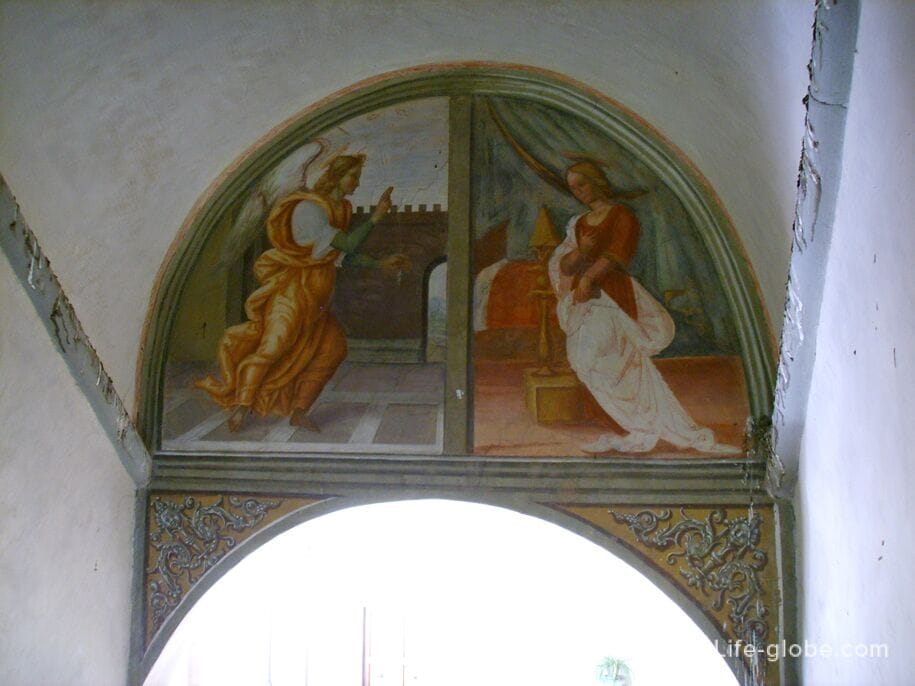
On the ground floor there is a large hall with landscape frescoes of the nineteenth century, which today is used for conferences and public meetings of the Accademia della Cruca. The frescoes depict the hills surrounding Florence and some imaginary views with ruins framed by painted columns.

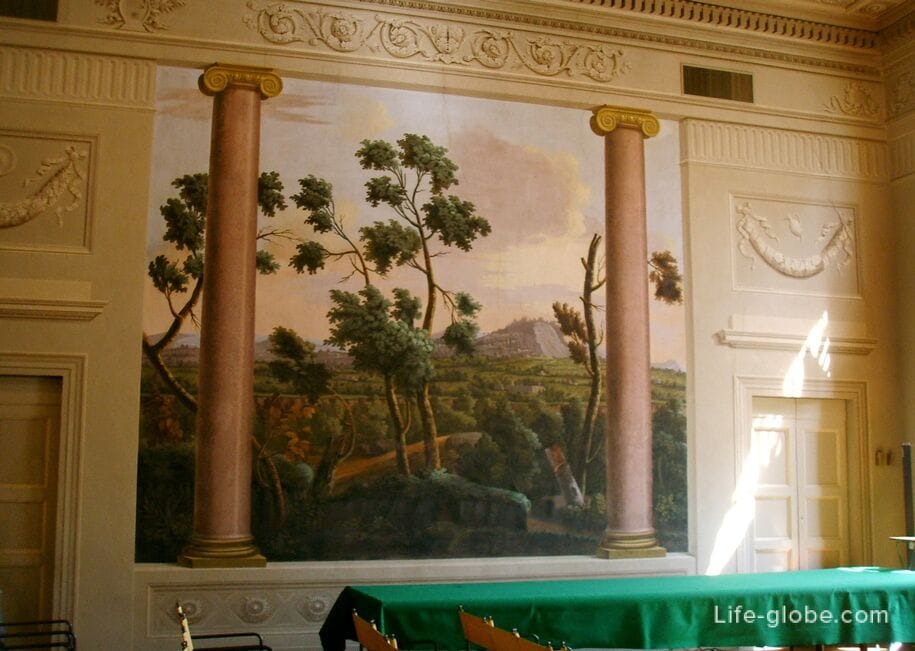
Also in the villa there is a small chapel and a so-called Study room, which got its name from the shelves; a fresco "Seasons" is placed on the ceiling.
Also on the ground floor is the Hall of Pallor (Sala delle Pale), named after 153 ancient "shovels" that hang on the walls. Two paintings stored here have a special significance for the history of the Academy: an allegory by Filippo Baldinucci, an academician, and a portrait of San Zanobi, elected defender of the institution.

The villa's garden is beautiful and undoubtedly makes an impression.
The garden is the best preserved example of an "Italian garden", some elements of which can be traced back to the origins of the fifteenth century: a compact and geometric shape, spread out on three terraces sloping to the rear of the villa. Despite the changes of the gardens throughout history, all these additions are also of great value, including the grotto, characteristic of Mannerism.
In the garden: terraces, alleys, flower beds, citrus fruits, flowers, sculptures, busts, fountains and a grotto.
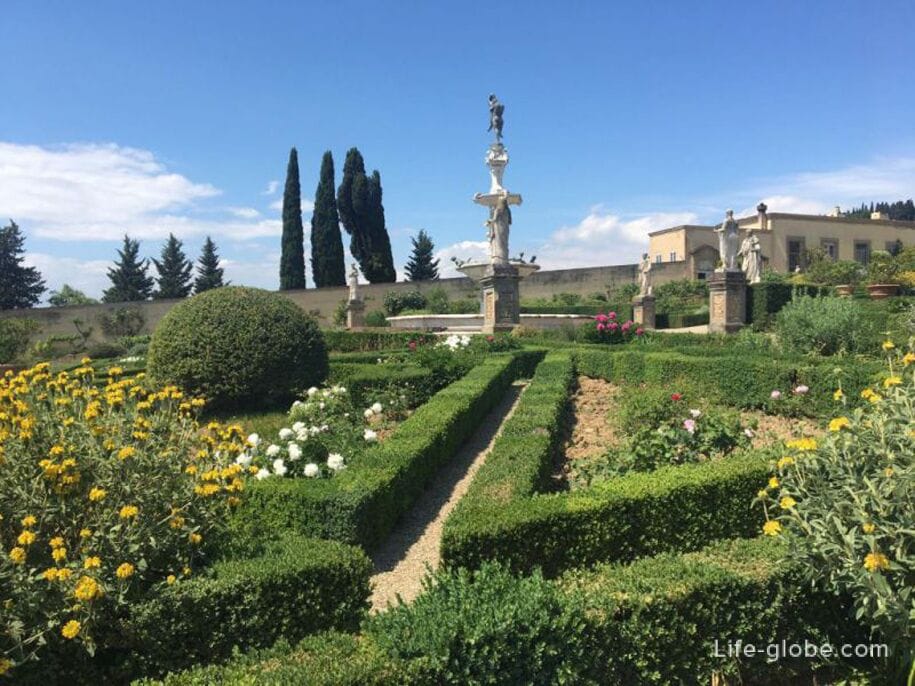
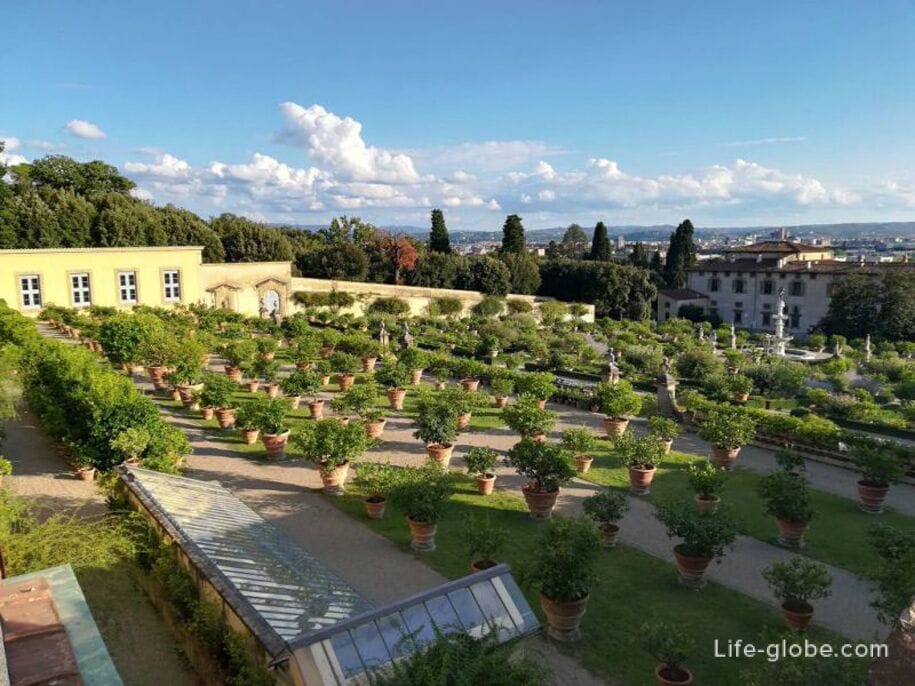
On the first terrace of the garden there is a magnificent fountain of Hercules and Anthea, the work of Tribolo and Pierino da Vinci, topped with bronze figures by Bartolomeo Ammannati.
Today, the fountain is surrounded by classical sculptures placed here during the perestroika of 1785-1788.
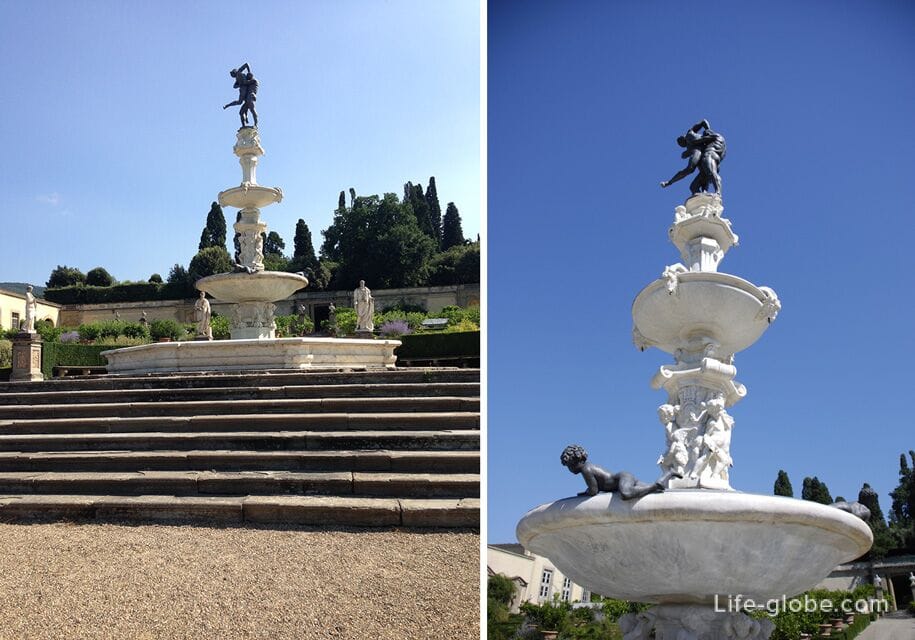
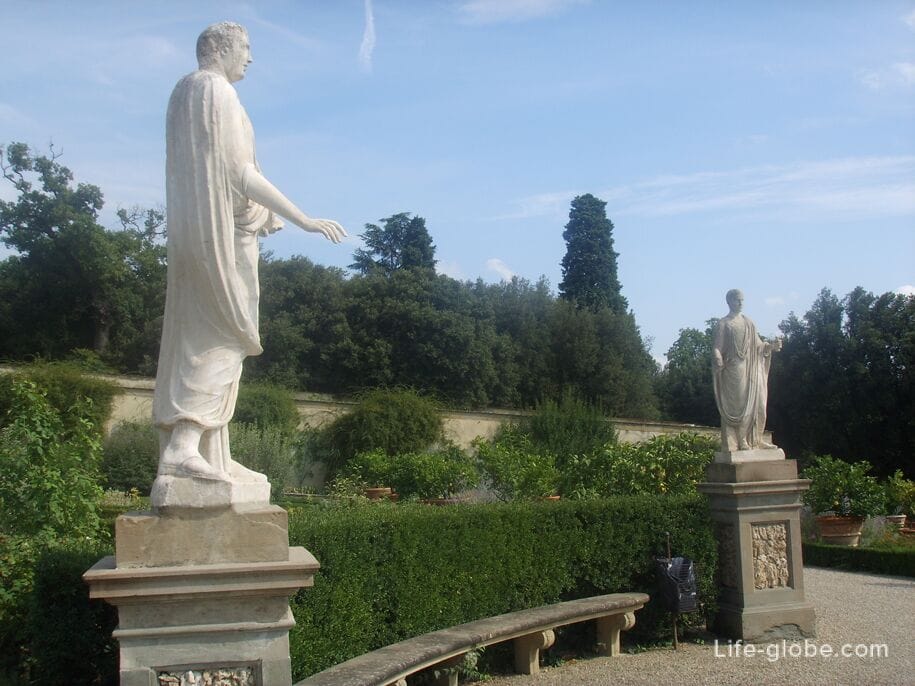
In ancient times, in the center of this part of the garden was the Florence fountain with the figure of Venus in the upper part of Giambologna's work. In 1788, the fountain was moved from the Castello to the nearby Villa La Petraia, also owned by the Medici, where it can still be seen today.
Fountain at Villa Petraia
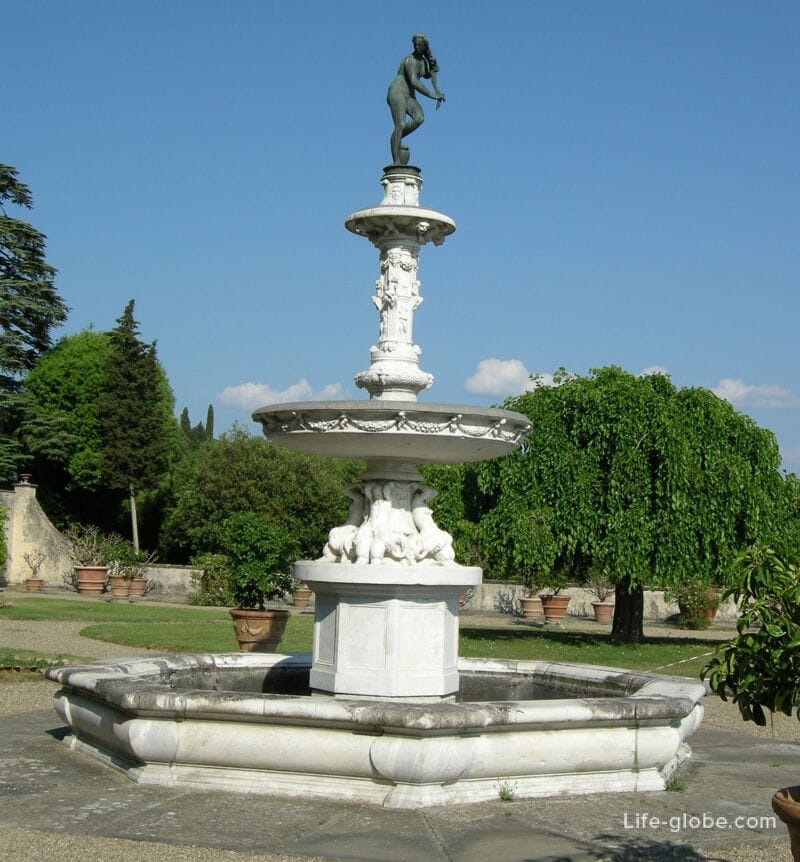
The second terrace is notable for greenhouses and is called the "Citrus Garden".
There is an extraordinary collection of a large number of citrus plants in pots (in the warm season they are exposed in the open air), which also contains citrus fruits collected by the Medici.
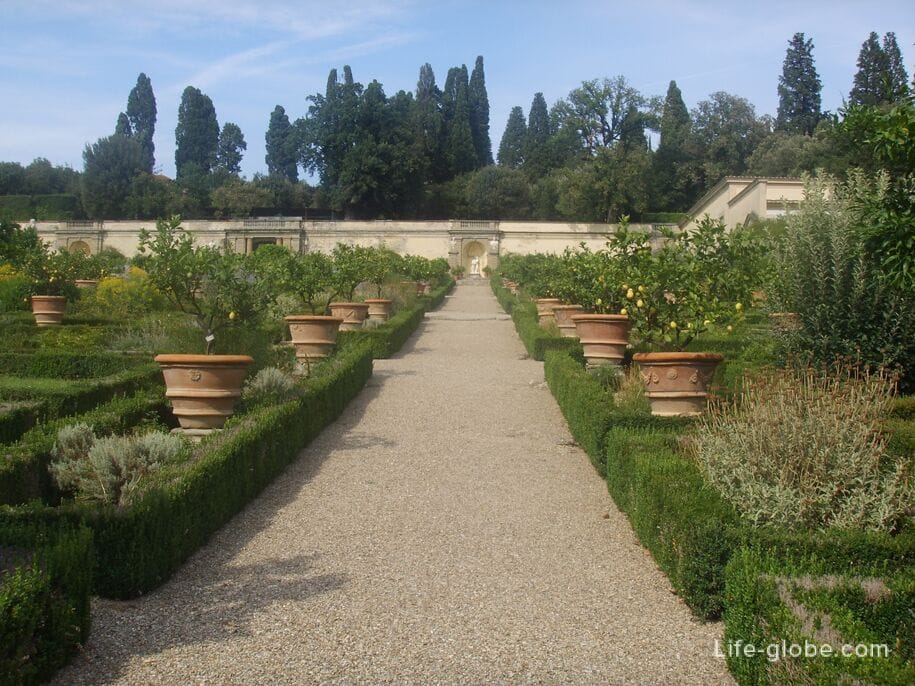

In the garden you can see busts of the Medici dynasty in Roman robes.
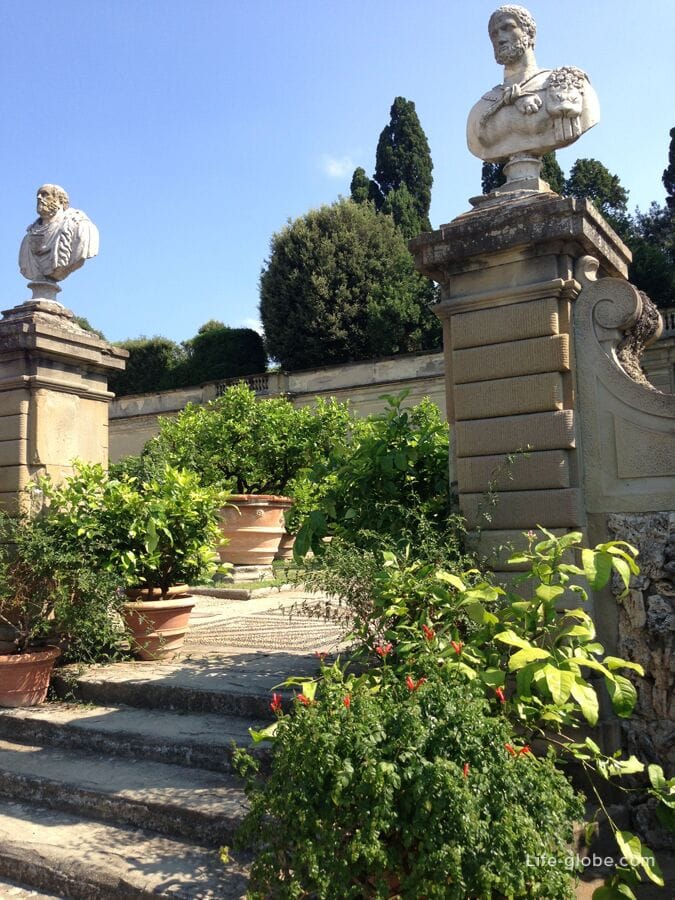
The Animal Grotto was designed by Tribolo and contains three pools-baths and colorful groups of animals (originally Cosimo I's idea of universal harmony).
The coffin was started by Tribolo and completed by Giorgio Vasari, using sculptures by Giambologna, a small part of which depicting various birds is now in the Bargello Museum in Florence.
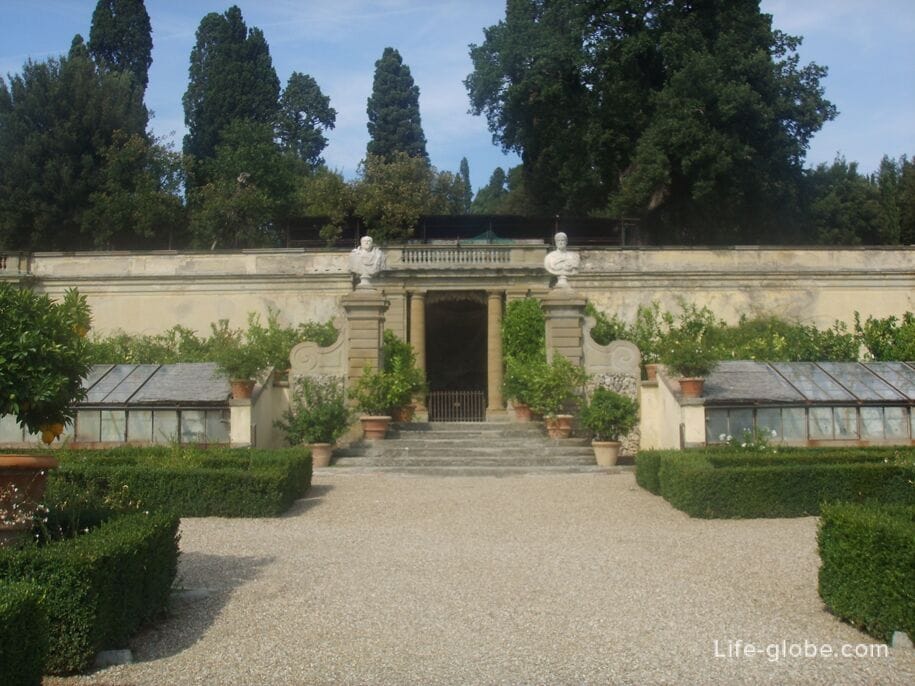
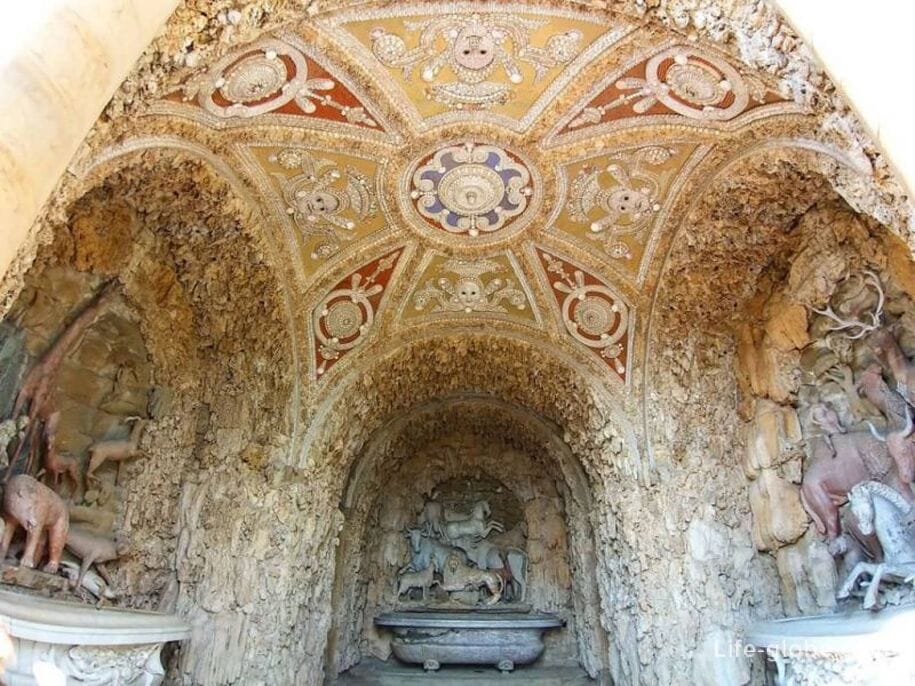
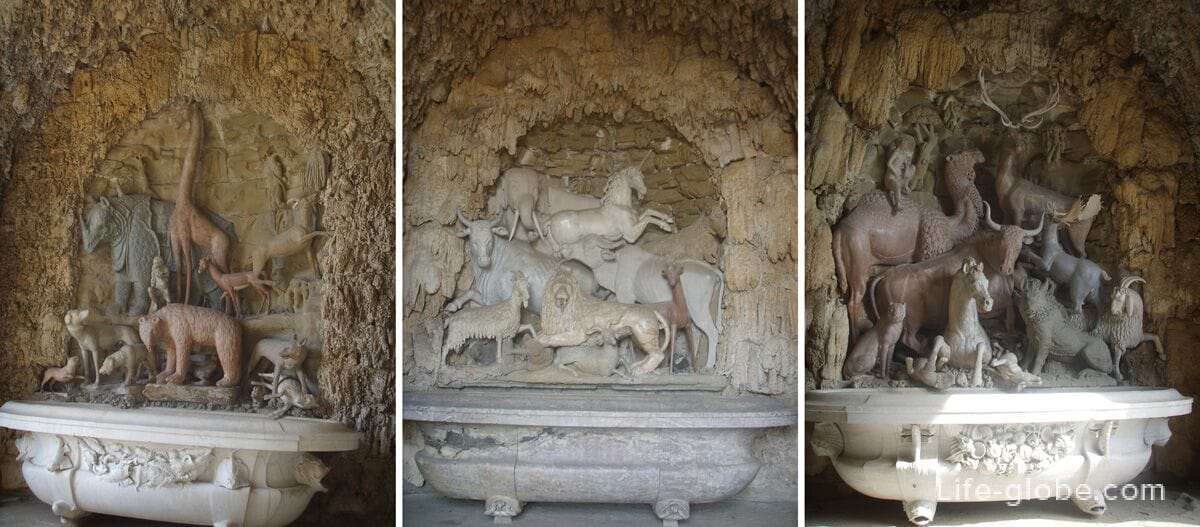
The lemon house is adjacent to the so-called Secret Gardens, which have high walls, which makes the gardens inconspicuous. In these gardens, the owners and guests of the villa could find themselves in absolute isolation, which did not interfere with their thoughts.
Aromatic and medicinal herbs, as well as exotic types of flowers were grown in the gardens. Therefore, the gardens were called ortaccio (ortaccio) or herbal.
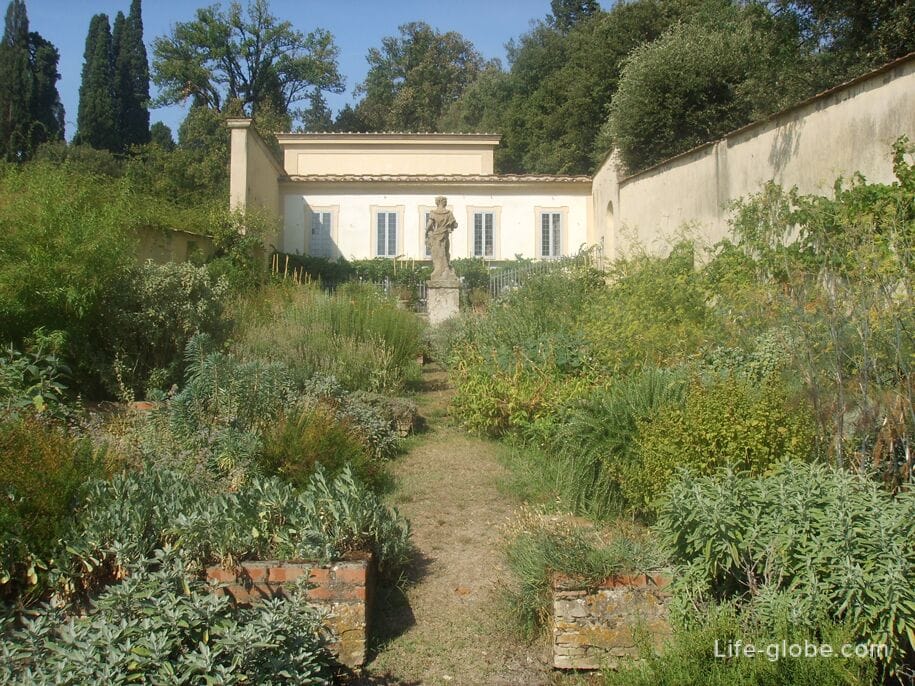
On the sides of the garden there are two flights of covered stairs leading to the upper level, where there is a "wild nature", that is, a forest area.
In this part of the garden, the January or Apennine Fountain (Gennaio, dell'Appennino) is notable, named after a bronze statue placed in the center on a spongy rock, by Bartolomeo Ammannati (dated between 1563 and 1565), which depicts an old man trying to keep warm from the cold by hugging himself. Initially, a jet of water in the shape of an umbrella came out of the head of the statue.
This part of the garden consists of a forest with oak trees. From here branches off a large English park, built in the third decade of the nineteenth century by the Lorraine family, behind which once stretched the countryside of an agricultural estate planted with vines and olive trees.
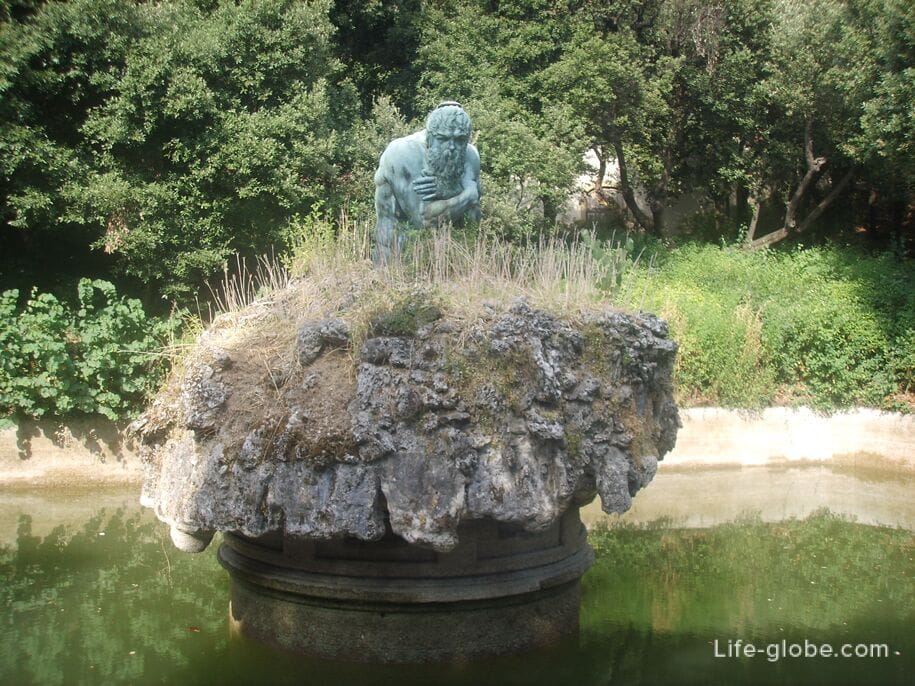
The website of the Accademia della Cruca: accademiadellacrusca.it.
The entrance to the gardens of the Villa Castello is free.
You can visit the gardens on certain days and opening hours.
The site of the gardens of Villa Castello: firenze-giardino-della-villa-di-castello.
The address of the Castello Villa and garden: Via di Castello, 44/46, 50141 Firenze FI, Italy.
Coordinates of the Castello Villa and Garden: 43°49'10.0"N 11°13'41.5"E (43.819447, 11.228183).
All accommodation facilities in Florence (hotels, apartments, guest houses, etc.), including in the historical center of the city and more remotely from it, can be viewed and booked here